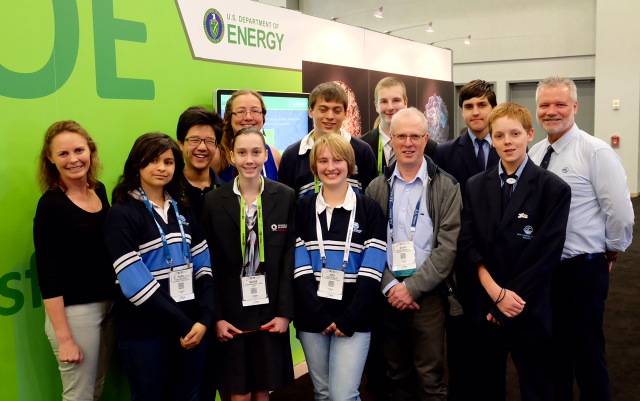
By Prof David Abramson, Director, RCC
I, along with nearly 13,000 other people, recently attended the 2015 ACM/IEEE International Conference on High Performance Computing, Networking, Storage and Analysis in Austin, Texas (also commonly called SC15, as in supercomputing).
SC is traditionally exhausting, and this was no exception. The conference hosts one of the largest technical show floors in the world, demonstrating the latest equipment and research. It runs a very competitive technical program with leading edge research papers, workshops and tutorials.
On top of the formal program, there are multiple briefing sessions by vendors in which they talk about their roadmaps for future systems.
The conference also boasts a number of high calibre keynote and invited talks. The drawcard this year was American actor Alan Alda talking about science communication. Who would have thought that M*A*S*H’s Hawkeye Pierce would become a passionate advocate for science communication, and now runs a centre at Stony Brook University in New York devoted to that mission?
As always, Alda was captivating as a speaker, but more importantly, he showed multiple examples of how scientists can improve their communication skills, and how this is so important in pitching their science to government and the broader community. Of course, there was the odd reference to M*A*S*H, which I guess goes with his belief that you have to know your audience.
I was delighted to see Dr Alex Szaly receive the 2015 Sydney Fernbach Award at the conference. Alex has been a tireless promoter of data intensive science, and was behind the WorldWide Telescope. His work in this area, with the late Jim Gray, has pushed data science and astronomy forward tremendously. Alex was his usual unassuming self and spoke confidently about what has been done, and what remains to be done. Certainly, new telescope sensors are going to stress our ability to store, manage and process data tremendously, especially when the new Large Synoptic Survey Telescope, with its 3.2 GPixel camera is up to speed in 2019.
For the past several years RCC’s research group has been collaborating with Cray Inc. to develop a new type of parallel debugger called a Comparative Debugger. This work has been supported by multiple ARC Linkage grants, and has delivered software that is supported on all Cray platforms. Cray was demonstrating the system, called CCDB, in their trade booth on the SC15 show floor. It is immensely rewarding to see not only academic outputs, but also commercial product from our research.
Speaking of academic outputs, we also presented a paper on the latest developments in the research in the technical program. Last year I gave an invited talk on this topic at SC14, and it was great to have our industry collaborator, Dr Luiz DeRose from Cray, present the new results that show how we have scaled the debugger to work on tens of thousands of processor cores, and thousands of GPUs in Cray's hybrid CPU/GPU supercomputers. Buy a Cray, and you get our debugger for free!
The SC show floor is legendary. There are literally hundreds of display booths, ranging from the largest vendors to small university research exhibits. The show floor provides a great opportunity to catch up with friends and colleagues, and see displays of the latest and greatest technology. The SCInet network is a masterpiece—it's probably the fastest network in the world, built in just a week by volunteers and engineers. In 2014 network traffic peaked at more than 900 Gigabits per second, supporting all high-performance research demos, wireless traffic, SC meeting room connections and more.
Perhaps the most personally rewarding highlight of the week was seeing how our high school students devoured the opportunity to attend SC15. Between Monash University and the University of Queensland, with industry support from SGI and ScaleMP, we sent eight high school students from Melbourne and Brisbane to the conference. The students presented their work on building a school sensor network, attended talks, and were given tours.
You can read what one of the teachers had to say here. These kids are the future workforce and their enthusiasm was contagious.



